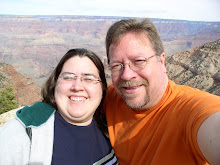So many times parents come into the center and think their child is "just playing" all day long. They think that we aren't doing anything with them.
Then, after a few months that same parent comes in all impressed because their child is writing his or her name, counting to 100, and recognizing shapes and patterns while on outings. Here's the thing, we don't let our children know they are learning most of the time.
Sure, at circle time the children probably can figure out that it is "lesson" time. But during free choice activities, they really think they are just playing! How do we do it?
We set up an environment that is conducive to learning and the children don't even know it. What to teach patterning? We do it so many different ways. My favorite is with Lego's. In the block area I put out a container or Lego's and I join in the fun:
When I approach I find out what they are making (usually airplanes, robots, or jet fighters). "Can I make one too?" Of course! Then, I talk out loud while I am building. "Hm, green, blue, green, blue, green, oh, I need another Lego for my robots leg." This draws them in. They hand me one (maybe red). I put it on, "No, that's not right. Look at the colors I'm using." They hand me a green one. "No, I have a green one there" They are now intrigued by what I am doing. I comment, "See, it doesn't fit my pattern." Now they are involved with what I am doing and are helping me to create the patterns.
That's all I have to do. I have created enough interest now that the next day when they are playing they are making patterns themselves...and showing me! Slowly, I start pointing out patterns around the classroom; slowly, they start pointing them out to me!
Another thing I do is put a sign in book for the children. Each child signs his or her name when they come in and when they leave for the day. Their name is written in big letters across the top of the page so they have a sample (I don't dot the letters or highlight anything, they copy it on their own). I also have a book in the writing area that has all of the children's names on a full sheet in protective sleeves with dry erase markers available. They can now write any child's name they want. At circle, and other times throughout the day, I listen carefully for that "how do you spell" or "what is this word". I take that cue and then create more pages in this book of "favorite words". These are words that they are interested in learning to write themselves.
We have treasure hunts. Cut out shapes of letters, shapes, numbers, anything and hide them all around the school. Then we have to find them! I also will create a map in which I put the location of the letters on the map and say "Let's go find the letter g" looking at the map we find it there, then we go look around the center for it.
When we are getting ready for a big activity or special event I ask them what we need. As they come up with the list, they write it out. Yes, I am writing it down as well so I can remember what it is if I can't read it, but that's on my own paper they know nothing about. Typically each child gets to write their own suggestions, but we might have a "secretary" who gets to write everything.
At the lunch table we might talk about what our favorite food on the plate is. As we are talking, I am writing down a graph on my clipboard. After everyone says their favorite, we talk about the graph I just made!
Another one of my favorite graph activities is in the manipulative area. I get one dice and a paper with columns of squares (six columns) I write the numerals at the bottom (1-2-3-4-5-6) and put a marker with it. Every time they roll the dice, they color in a square in the corresponding column. They just like rolling the dice, counting the numbers, finding the numeral, and then coloring it in. They don't realize they are making a graph and learning about probability.
When parents ask me what they can do at home to help them learn; they are typically looking for "Sit them at the table and have them write..." What I tell them is: have them write the grocery list and read it when they get to the store, show them how to find the price of an item and have them tell you how much it is (as they get older, have them add up the items as you shop-round up or down for the younger ones $5 and $2 is how much), look at signs on the street and talk about the shapes, read books and have them "read" aloud to you.
What things to you tell the parents to do at home? What is your favorite classroom activity that is teaching the children when they don't know they are learning?
8/06/2008
Sneaky Education
Labels:
curriculum ideas,
literacy,
manipulative,
math,
parent involvement,
writing
Subscribe to:
Post Comments (Atom)

No comments:
Post a Comment